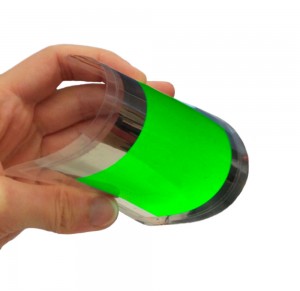
OLED popularity driven by rise in electronic design applications
Stephen Law
Optoelectronics EngineeringOLED technology continues on its path of becoming the leading lighting choice among designers and end-users, according to a recent report from Allied Market Research. Its characteristics of being thinner, brighter, more lightweight, with improved power efficiency and higher contrast overshadows LCDs.
OLED – also known as organic light emitting diode – is a flat light emitting technology developed by placing thin organic film between two conductors. OLEDs offer wide viewing angles, faster response times, higher contrast ratios and more saturated colors to enhance viewing experience of end users. OLED is one of the most promising display and lighting technologies that has the capability of offering power efficiency lighting and is superior compared to the fluorescent tubes and incandescent bulbs. OLED technology helps end-user to create flexible display and lighting panels. OLEDs are more expensive than LED and LCD products. However, price of these products would decrease gradually once the products gain acceptance.
OLED energy efficiency is key
Various emerging and developed economies around the world are working towards switching to energy efficient OLED lighting solutions. Experts have predicted that OLED technology should meet the required performance and pricing targets necessary to facilitate smooth transition from conventional to efficient lighting solutions. Moreover, government and industry funding for R&D is expected to boost the process of addressing the technological challenges of the world OLED lighting solution.
It would appear that the OLED market is ready for a facelift as well. At least that was the overriding feeling among participants in the recently held ‘OLED Lighting International Design Competition’, sponsored by LG CHEM and LG Electronics, as entrants were encouraged to deliver their innovation in organic, thin curves, as well as unconventional wood finish displays.
LG’s latest displays demonstrated leading edge screen technology: a 55-inch OLED panel that’s 0.97mm thick and weighs 1.9kg (4.1 pounds). The panel is so thin that it can be stuck to the wall using a magnetic mat before being peeled off like wallpaper. Industry experts are confident that leading-edge technology like this should open new avenues within the TV sector.
OLED applications vary
In the flexible OLED display race, Apple has patented its ‘Smart Paper’ product, a digital periodical reading display capable of presenting information sent to it from a smartphone or other mobile devices. This creates a highly conventional consumer interface with online readers of magazines and newspapers alike.
The OLED market study from Allied Market Research shows continued growth in application use and consumer acceptance within North America, Europe, Asia-Pacific and LAMEA. Major electronic brands like Panasonic stunned the entire OLED market four years ago when it launched its energy efficient, emotion-reading OLED lights. Created by famous lighting designer Ferruccio Laviani, Panasonic’s product range displayed greater capacity of spatial sensors, spotlights, OLED panels and more. This breakthrough in the sustainable energy segment was an outcome of years of intensive research and investment. Today, key market players such as GE, Samsung, Sony, DuPont, Asus among others are currently investing and teaming up with regional players in the OLED industry to remain competitive.
Within automotive lighting industry, OLED technology is believed to increase the market status of the cars. Thin and bright lighting panels have opened new avenues within the car market. Lighting in future vehicles will continue to progress with new emergence of new dashboard displays, plus internal and external illumination.
Recent developments involving the integration of OLEDs with touch screens stands to impact the mobile market significantly. The move is on to implement OLEDs into equipment that require electronic display panels, such as personal digital assistants (PDAs), portable games, mobiles phones, personal care devices, household items, digital cameras and dynamic information displays. Last year, Nekkei Technology of Japan introduced its 8.7-inch touchscreen tri-fold OLED. Featuring complete HD resolution and a pixel density of roughly 252ppi, the display can be folded up to three times.
Panel manufacturers are adopting innovative ways to improve their production lines, while deepening market research to continue on the path of evolving this technology for years to come.

